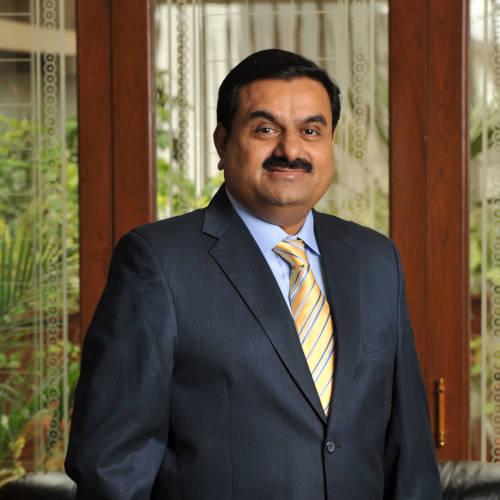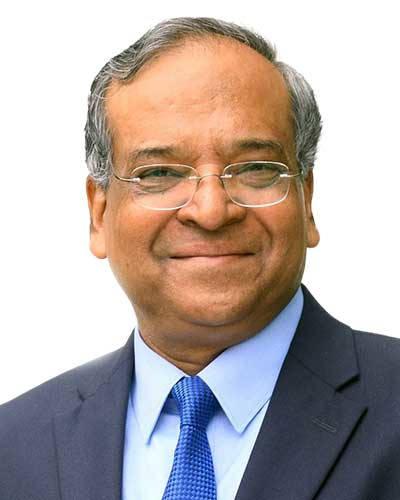-

Adani: setting global benchmarks
Reflecting on this journey of progress, K Mohandas, former Secretary to the Government of India in the Ministry of Shipping and former officer, Indian Administrative Services says: “The Adani group started it as a captive jetty in 1998, added an SPM in 2001 and the first container terminal in 2003, and continued to develop the cargo-handling capacities for various cargos using the best of technologies; it has now emerged as India’s top port in terms of cargo handling. The growth story of the port over the last quarter century represents several growth stories – the development of Indian infrastructure, private participation in infrastructure development, the Gujarat model of development, the emergence of the Adani group as a major player in multiple sectors, and the port-led development of a region.”
No doubt, when the port kicked off operations, there was little economic activity. Over the years, the Adani Group invested in building systems and operations. “The preference of the ports would normally be to invest in activities that generate cargo; investment in social infrastructure needs a different form of social commitment. The Adani Group did both – they developed India’s largest port-based multi-product industrial park and simultaneously contributed to the development of a whole region,” adds Mohandas.
Ports for progress
On the other hand, India requires the port infrastructure to fire on all cylinders if it has ambitions to become a five trillion-dollar economy and beyond. Ports serve as the backbone of its economic structure, playing a pivotal role in boosting trade, industrial expansion, energy procurement, tourism, and job creation. Integral to the nation’s prosperity, ports handle a staggering 95 per cent of trade by volume and 68 per cent by value, as highlighted by the ministry of ports, shipping, and waterways.
The post-Independence period saw a lull in port development, but the past 30 years have seen remarkable growth, fuelled by economic advancements and strategic government policies. Today, India boasts 12 major ports and over 210 smaller ones, with active participation from the private sector. Among them, the Mundra port and the Adani Group’s Vizhinjam seaport have developed quickly and play a major role.
“Privately owned Mundra Port has the critical advantage of a 15-metre natural draught that allows for handling large vessels with up to 75,000 metric tonnes of cargo. Similarly, the Adani Group’s deep-water international seaport in Vizhinjam, Kerala was set up in a public-private partnership. The recent Global Maritime India Summit 2023 in Mumbai inaugurated by Prime Minister Narendra Modi signals the importance of this infrastructure,” says Dhanendra Kumar, a former chairperson of the Competition Commission of India and executive director at the World Bank.
While the 2006 Special Economic Zones (SEZ) Act further invigorated the sector, leading to the creation of port-connected SEZs, government reforms especially through the Sagarmala scheme, aim to strengthen this sector, with a vision of completing 802 projects by 2035. The scheme has already seen the completion of projects worth Rs1.12 lakh crore, with many more underway. “Revenue from ports, like the Mundra port’s Rs80,000 crore contribution to customs, underscores the significant economic impact of this sector,” adds Kumar.
-

Mohandas: growth stories galore
Global hub
Mundra is now poised to be elevated as a central hub for the India-Middle East-Europe Economic Corridor (IMEC). The memorandum of understanding for IMEC was signed by key global entities, including Saudi Arabia, the European Union, India, the UAE, France, Germany, Italy, and the US, at the G20 Summit in New Delhi in September 2023.
Under IMEC, two corridors are proposed: one connecting India to the Arabian Gulf and the other linking the Arabian Gulf to Europe. The goal is to bolster road, rail, and maritime connectivity, ensuring seamless movement of goods and services between key regions including India, the UAE, Saudi Arabia, Jordan, Israel, and Europe.
The Mundra port on the west coast of India has a strategic advantage of being close to the international trade route. Added to that is its proximity to the Middle East – a key trading ally for India. “The Adani group’s acquisitions of the container terminal in Colombo and the port in Haifa (Israel) will add to their role in global maritime transportation. The proposed India–Middle East–Europe Economic Corridor connecting India’s west coast to Europe through UAE, Saudi Arabia, Israel, and Greece is an ambitious collaborative project for multi-modal transportation with economic benefits for all the participants; this would run parallel to the Chinese BRI. The Adani Group can play a key role in this, as the owners of Mundra Port as well as Haifa Port,” says Mohandas.
What’s more, shipping lines are deploying larger vessels for transhipment because of reduced costs. On the other hand, seaports are struggling with cargo evacuation infrastructure, handling capacity and operational inefficiencies. Mundra has not only effectively addressed some of these issues but is also continuously enhancing its container handling capacities.
Earlier, a large part of India’s container volume would be transhipped through foreign ports. But the trend is shifting with the development of strategic facilities like Mundra that can push India to the centre stage as a global transhipment hub. With seaports on both the east and the west coasts of India, Adani Ports and Special Economic Zone Limited (APSEZ), the country’s largest private port operator has also invested in building strategic partnerships with major shipping liners. These associations have facilitated capacity enhancement in ports like Mundra, and they have immense potential in building and maintaining long-term cargo tie-ups.
In FY22, Mundra Port managed around 1.72 MTEUs of transhipment-based container volume, marking a 28 per cent YoY increase. According to data, transhipment-based volumes constituted 23 per cent of the total container volume processed by APSEZ in FY22, an increase from 21 per cent in FY21 and 14 per cent in FY20.
From managing one port in 1998, APSEZ now oversees 14 ports/terminals across the country. The company’s share in the total cargo handled at India’s ports has risen from 10 per cent in FY13 to 24 per cent in FY23. APSEZ has recorded a growth in handling cargo over the years and in FY23, it managed 339 MMT.
-

Kumar: significant economic impact
Future ready
The trajectory is seeing a shift towards containerised volumes’ market share reaching 42 per cent in FY23. In FY20 it was 36 per cent and in FY18 it was 33 per cent. Containerisation provides a mechanism to consolidate goods into standardised units, or Twenty feet equivalent units (TEUs). Its advantages are manifold, and it has been one of the most impactful innovations in maritime trade. Containerisation helps streamline processes and reduces dependency on manual labour; it enhances cargo security and facilitates timely and cost-effective transportation.
“Containerisation has emerged as a key trend in cargo handling, with APSEZ standing as a key beneficiary, due to its flagship port in Mundra,” states a recent research report from Motilal Oswal. The investment in Mundra Port over the years has been both robust and forward-thinking. Last year it infused Rs2,300 crore and has enhanced infrastructure and expanded terminals. “APSEZ has been a key beneficiary of this trend, with Mundra leading the way through the setup of incremental container handling capacities. Additionally, the combinations of an expanded and well-diversified portfolio, strategic port locations, and efficient operations have led to continued market share gains. APSEZ has evolved from operating just two ports (Mundra and Dahej) in FY11 to a portfolio of 14 ports/terminals across India. The company now accounts for 24 per cent of the total cargo handled at India’s ports (FY23) vs just 10 per cent in FY13,” adds the Motilal Oswal report.
With Rs4 lakh crore earmarked for the next half-decade, Mundra is set to be at the centre of witnessing a transformative leap with new projects that include port expansion, new berths for copper ore, a state-of-the-art copper smelter plant, ventures in green hydrogen, and renewable energy developments. The port’s reach, which spans the industrious north and the entrepreneurial west of India, is of strategic importance.
It is within this context of growth and innovation that Mohandas projects an optimistic future. “With a massive hinterland covering Delhi, Punjab, Haryana, UP, and Rajasthan, and a near hinterland in the industrially developed and further developing Gujarat, Mundra Port will continue to grow,” he asserts. As Mundra strides into the future, it is distinctly shaping the epoch-making era of India’s maritime legacy.





































